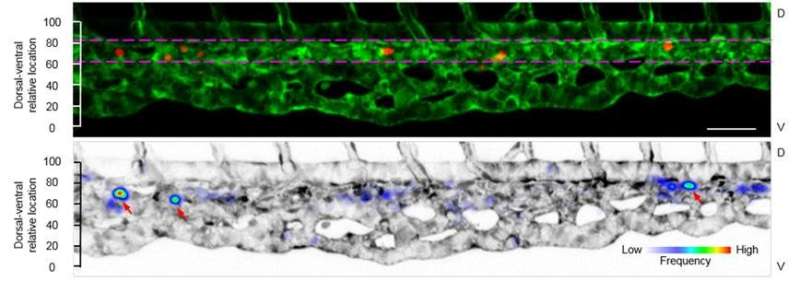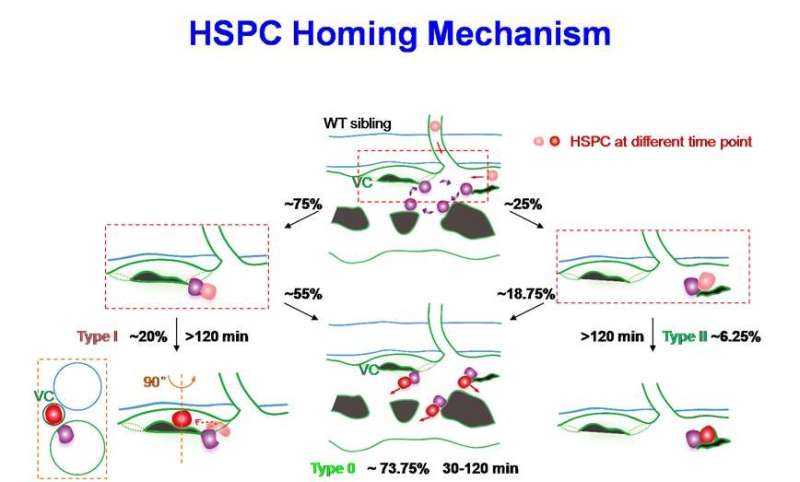HSPC 'seeds' reveal VCAM-1+ macrophage role in homing process

Hematopoietic stem and progenitor cells (HSPCs) give rise to all blood lineages that support life. HSPCs, like seeds, need a suitable microenvironment to maintain their function. A process called "homing" allows HSPCs to anchor in their niches in order to expand and differentiate. Unique niche microenvironments composed of blood vessels and other niche components, including stromal cells, regulate this process.
To study the detailed architecture of the microenvironment and the regulation mechanism of homing, Prof. Pan Weijun's group at the Shanghai Institute of Nutrition and Health of Chinese Academy of Sciences used a zebrafish model to analyze the entire dynamic process of HSPC homing in vivo. The study, titled "VCAM-1+ macrophages guide the homing of HSPCs to a vascular niche," was published in Nature on Nov. 19, 2018.
By using a combination of advanced live imaging and a cell labeling-tracing system, researchers performed a high-resolution analysis of HSPC homing in zebrafish caudal hematopoietic tissue (CHT, equivalent to the fetal liver in mammals). Compared to itga4 mutants with homing defects, successful HSPC retention was defined in CHT as the lodgement of HSPCs for more than 30 minutes.

The researchers also found that HSPCs preferred to stay at retention "hotspots" associated with venous capillaries, which are largely localized at the venous capillary confluence points connected to the caudal vein plexus. Further study showed that VCAM-1+ macrophages patrolling the inner surface of the venous plexus interact with HSPCs in an ITGA4-dependent manner and direct HSPC retention. These cells, named "usher cells," guide HSCP homing to two types of vascular niches. Usher cells, together with endothelial cells, help HSPC homing through distinct mechanisms.
This study dissects the temporal-spatial rules of HSPC retention, provides new insights into the mechanism for HSPC homing, and reveals the essential role of a VCAM-1+ macrophage population with patrolling behavior in HSPC retention.
More information: Dantong Li et al, VCAM-1+ macrophages guide the homing of HSPCs to a vascular niche, Nature (2018). DOI: 10.1038/s41586-018-0709-7
Journal information: Nature
Provided by Chinese Academy of Sciences



















